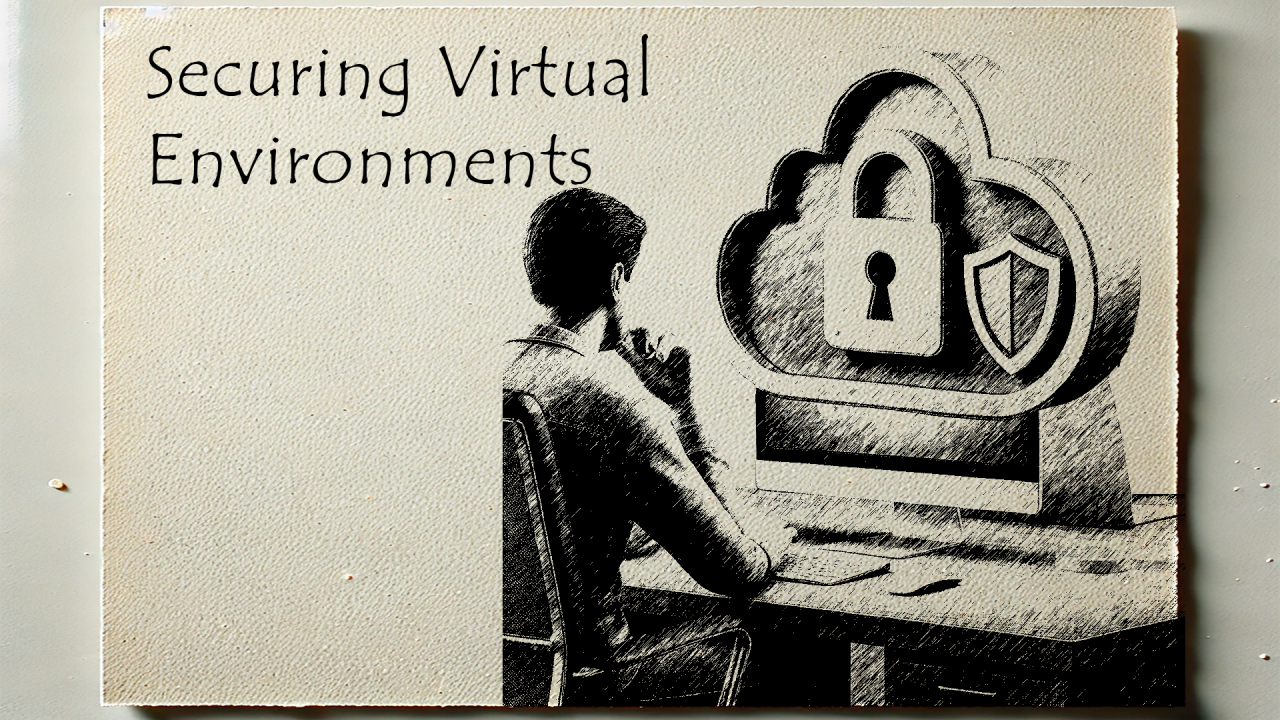Security of Virtual Environments: Virtual environments, such as virtual machines (VMs), containers, and cloud-based systems, are integral to modern IT infrastructures.
However, their flexibility and scalability introduce unique security challenges. Ensuring the security of virtual environments requires a combination of best practices, specialized tools, and proactive strategies to protect against cyber threats. This article examines key methods for securing virtual environments effectively.
Understanding Virtual Environment Security

Virtual environments create isolated instances that run on shared physical hardware, allowing for efficient resource utilization. However, this shared infrastructure can become a vulnerability if not properly secured. Common threats include:
- Unauthorized Access: Attackers exploit weak credentials or misconfigured access controls to gain unauthorized access.
- Hypervisor Attacks: Targeting the software layer managing virtual machines.
- Data Leakage: Improper isolation leading to data exposure between virtual instances.
- Malware and Exploits: Malware spreads within virtual environments or exploits unpatched vulnerabilities.
Securing virtual environments involves protecting the virtual machines, containers, hypervisors, and the underlying network infrastructure.
Key Strategies for Security Of Virtual Environments
- Implement Strong Access Controls
- Use strong, unique passwords and multi-factor authentication (MFA) for all accounts accessing virtual environments.
- Apply the principle of least privilege, ensuring that users and processes have access to only the resources they need.
- Regularly review and update access permissions to prevent unauthorized access.
- Secure the Hypervisor
- Keep hypervisors (e.g., VMware, Hyper-V, or KVM) up to date with the latest security patches.
- Hardening and hypervisor configurations by turning off unnecessary services and features.
- Use dedicated security tools to monitor and protect the hypervisor from attacks.
- Isolate Virtual Instances
- Ensure proper segmentation between virtual machines or containers to prevent lateral movement by attackers.
- Use network segmentation and firewalls to isolate sensitive workloads.
- Implement strict policies to prevent data leakage between virtual instances.
- Patch and Update Regularly
- Apply security patches to operating systems, applications, and virtualization software promptly to ensure optimal security.
- Automate patch management to ensure timely updates across all virtual environments.
- Monitor for vulnerabilities using tools specifically designed for virtual environments, such as vulnerability scanners.
- Monitor and Log Activities
- Deploy monitoring tools to track activities within virtual environments in real-time.
- Enable logging for all virtual machines, containers, and hypervisors to detect suspicious behavior.
- Use Security Information and Event Management (SIEM) systems to analyze logs and identify potential threats.
- Use Antivirus and Anti-Malware Tools
- Install endpoint protection solutions designed for virtual environments to detect and remove malware.
- Ensure antivirus software is optimized to avoid performance impacts on virtual systems.
- Regularly scan virtual instances for malicious files or activities.
- Encrypt Data
- Encrypt sensitive data at rest and in transit within virtual environments.
- Use secure protocols (e.g., TLS) for communication between virtual instances and external systems to ensure safe data transmission.
- Implement encryption for backups to protect data in case of a breach.
- Backup and Disaster Recovery
- Regularly back up virtual machines and containers to ensure data recovery in case of an attack or failure.
- Store backups in secure, off-site locations to prevent unauthorized access and ensure data protection.
- Test disaster recovery plans periodically to ensure quick restoration of virtual environments.
- Leverage Specialized Security Tools
- Use virtualization-aware security solutions that provide visibility into virtual workloads and detect threats specific to virtual environments.
- Deploy intrusion detection and prevention systems (IDPS) tailored for virtualized networks.
- Consider utilizing ud-native security tools for environments hosted on platforms such as S, Azure, or Google Cloud.
- Educate and Train Staff
- Train IT teams and employees on best practices for managing and securing virtual environments.
- Raise awareness about phishing and social engineering attacks that could compromise virtual systems.
- Conduct regular security drills to prepare staff for potential incidents.
Challenges in Securing Virtual Environments
- Complexity: Virtual environments often involve multiple layers, including hypervisors, virtual machines (VMs), and containers, which makes security management complex.
- Resource Constraints: Security tools may consume significant resources, impacting performance.
- Dynamic Nature: Virtual instances are frequently created, modified, or deleted, requiring continuous monitoring and updates.
- Shared Responsibility: In cloud-based virtual environments, security responsibilities are split between the provider and the user, which can lead to gaps if not clearly defined.
Best Practices for Ongoing Security
- Adopt a Zero Trust Approach: Verify every user, device, and process before granting access to virtual environments.
- Conduct Regular Security Assessments: Perform penetration testing and vulnerability scans to identify weaknesses.
- Stay Informed About Threats: Monitor threat intelligence feeds to stay updated on new vulnerabilities and attack techniques targeting virtual environments.
- Automate Security Processes: Utilize automation for patch management, monitoring, and incident response to minimize human error and enhance efficiency.
Conclusion
Securing virtual environments is crucial for organizations that rely on virtualization for their IT operations. By implementing robust access controls, securing hypervisors, monitoring activities, and utilizing specialized tools, businesses can significantly mitigate risks.
Combining these technical measures with staff training and proactive threat monitoring ensures a robust defense against cyber threats. As virtual environments continue to evolve, staying vigilant and adapting to new challenges will be key to maintaining their security.
FAQ
Why are virtual environments vulnerable?
Because virtual machines (VMs), containers and hypervisors share infrastructure, a breach of one layer (e.g., the hypervisor) can expose many systems.
How should access to virtual infrastructures be managed?
Use strong authentication (ideally multi-factor), role-based access control (RBAC), least-privilege principles and regular reviews of permissions.
What are key technical controls for securing virtual environments?
Among the essential controls: keep hypervisors patched, segment networks (and isolate VMs), encrypt data at rest and in transit, monitor/log activities, and manage backup/DR processes.